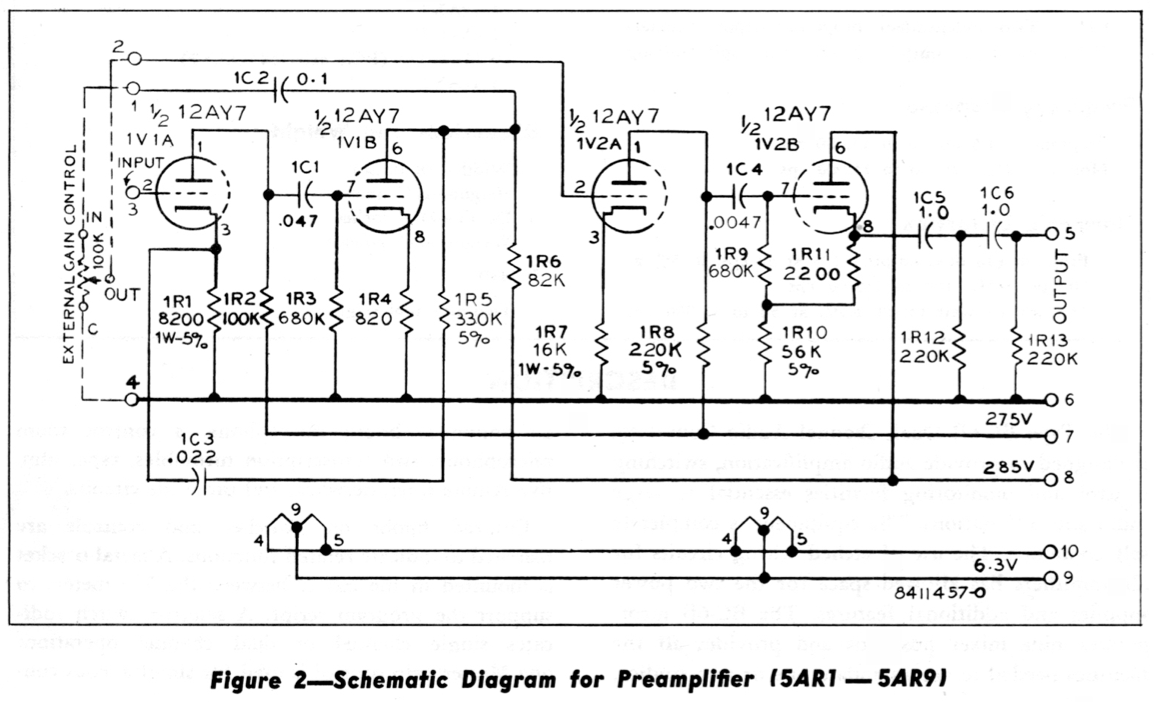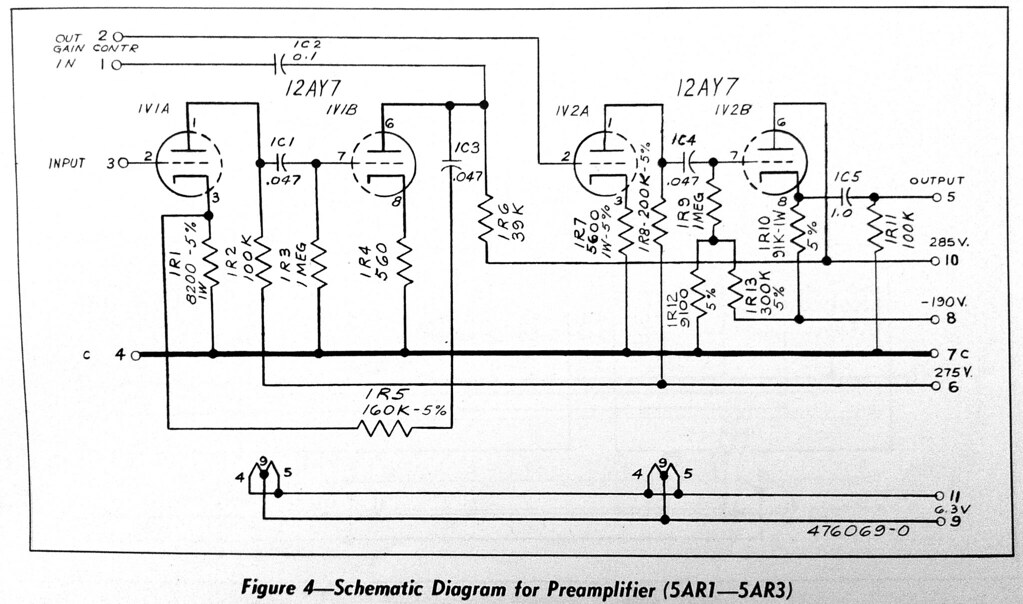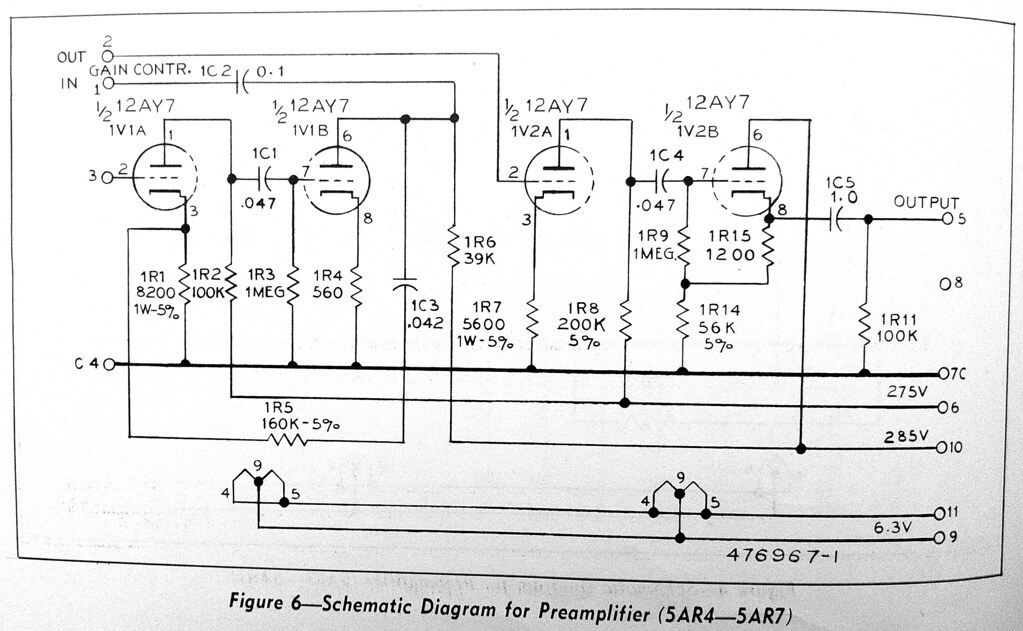Cathode follower will have more headroom into a higher value load. If you clip it driving a higher load, it may sound more pleasing than when driving a lower load. Original is a high load, no transformer.
The console PSU shows elevation of filament. It's not required.
Power filtering; do the math comparing number of channels versus stock console PSU/channel count. Really lots of leeway.
My gain tests were done with (2) 10mfd filter caps and 100K between them, 1K input isolation resistor.
RCA console method is a 10K iso resistor feeding 40mfd feeding 22K feeding 40mfd for every 5 preamps in parallel.
Equate to 20K/20mfd/50K/20mfd for 2 preamps, or 40K/10mfd/100K/10mfd for 1 preamp:
picture link
The console PSU shows elevation of filament. It's not required.
Power filtering; do the math comparing number of channels versus stock console PSU/channel count. Really lots of leeway.
My gain tests were done with (2) 10mfd filter caps and 100K between them, 1K input isolation resistor.
RCA console method is a 10K iso resistor feeding 40mfd feeding 22K feeding 40mfd for every 5 preamps in parallel.
Equate to 20K/20mfd/50K/20mfd for 2 preamps, or 40K/10mfd/100K/10mfd for 1 preamp:
picture link































![Soldering Iron Kit, 120W LED Digital Advanced Solder Iron Soldering Gun kit, 110V Welding Tools, Smart Temperature Control [356℉-932℉], Extra 5pcs Tips, Auto Sleep, Temp Calibration, Orange](https://m.media-amazon.com/images/I/51sFKu9SdeL._SL500_.jpg)






